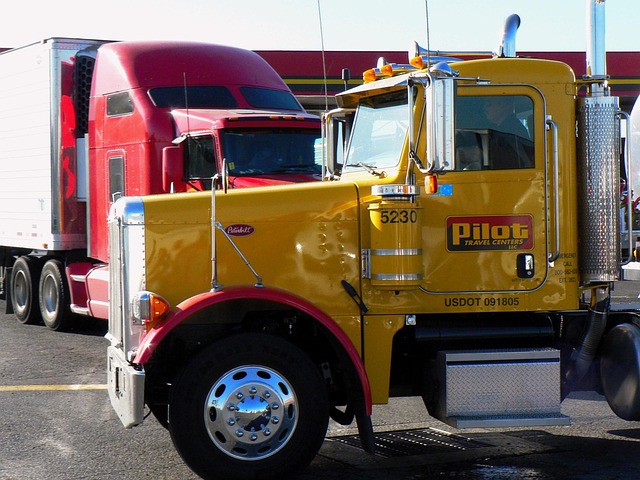Looking to register your car in California? This comprehensive guide breaks down the process step by step. From understanding key requirements to navigating the crucial VIN verification, we’ve got you covered. We’ll walk you through gathering essential documents, completing the application, and securing your registration certificate and license plate. Master the art of California car registration, including best practices for successful VIN verification.
- Understanding California Car Registration Requirements
- Gathering Necessary Documents for VIN Verification
- The Step-by-Step Process of VIN Verification
- Submitting Your Application and Paying Fees
- Receiving Your Registration Certificate and License Plate
Understanding California Car Registration Requirements

Understanding California Car Registration Requirements
In California, registering a car involves several key steps and considerations. The process is designed to ensure vehicle safety and compliance with state regulations. One crucial aspect is the verification of the Vehicle Identification Number (VIN). This unique 17-character code provides critical information about the vehicle’s history and specifications, making VIN verification an essential part of the registration procedure. A mobile VIN verifier or mobile VIN inspection service can simplify this process by enabling on-site checks, ensuring a smoother transition to registering your car in California.
Additionally, you’ll need to meet certain legal requirements, such as proof of insurance, payment for registration fees, and possibly emissions testing, depending on your vehicle’s age. It’s important to gather all necessary documents, including your driver’s license, proof of ownership, and any applicable forms from the Department of Motor Vehicles (DMV). By understanding these requirements and utilizing available resources like mobile VIN verification services, you can navigate the registration process more efficiently.
Gathering Necessary Documents for VIN Verification

Before you begin the registration process, it’s crucial to gather all the essential documents for VIN (Vehicle Identification Number) verification. This step is a critical part of ensuring your car’s authenticity and is often required by California’s Department of Motor Vehicles (DMV). You’ll need your vehicle’s registration certificate from the previous state, if applicable, as well as proof of ownership, which can be a title or a bill of sale. Additionally, have your driver’s license and any necessary identification documents ready.
For a smoother process, consider using a mobile vin verification service. These services offer convenient options like on-site inspections or mobile vin inspectors who can visit you to complete the verification. This is particularly beneficial for those with busy schedules or those who prefer not to travel to a DMV office. Ensure that your chosen provider is reputable and authorized to conduct such verifications in California to guarantee a legitimate and efficient experience.
The Step-by-Step Process of VIN Verification

The process of VIN (Vehicle Identification Number) verification is a crucial step when registering your car in California. Here’s how it works:
1. Obtain Your Documents: Start by gathering all necessary documents, including your vehicle’s registration certificate from the previous state, proof of ownership, and insurance information. Additionally, ensure you have your driver’s license and a valid California driver’s license.
2. Prepare for the VIN Verification: Next, locate your car’s VIN, usually found on the vehicle’s chassis or in its door jamb. Write it down clearly as you’ll need it for the next steps. You can opt for a mobile vin inspection or use a mobile vin verifier to streamline this process, ensuring accuracy and saving time.
Submitting Your Application and Paying Fees

After completing your vehicle’s registration form, it’s time to submit your application and fees. You’ll need to provide a valid driver’s license or ID card, proof of insurance, and the required registration fees. California offers several payment options, typically including cash, check, debit/credit cards, or online payments.
One efficient service that streamlines this process is a mobile vin verifier or mobile vin inspection. These services allow you to have your vehicle’s VIN (vehicle identification number) verified electronically, ensuring all details are accurate and current. This step is crucial for a seamless registration experience and prevents potential delays caused by errors in the provided information.
Receiving Your Registration Certificate and License Plate

After completing your vehicle’s registration process, it’s crucial to receive your Registration Certificate and License Plate. This is a vital step in ensuring your car is legally recognized on California’s roads. Once approved, you’ll be issued a unique Registration Certificate that verifies your vehicle’s identity, including its Vehicle Identification Number (VIN). This certificate serves as official documentation of your car’s registration status.
Additionally, a set of license plates will be provided, which must be displayed prominently on your vehicle at all times. For convenience, California offers the option of a mobile VIN inspection or verification service, allowing you to complete this step without visiting a DMV office. This service ensures that your vehicle’s details are accurately checked, facilitating a smooth and efficient registration experience.
Registering a car in California involves understanding specific requirements and following a straightforward process. By gathering all necessary documents, including proof of ownership and identification, you’re ready for the key step of VIN (Vehicle Identification Number) verification. This crucial process ensures your vehicle’s authenticity and allows you to obtain your registration certificate and license plate. Remember, timely submission of all required paperwork is essential to avoid delays in getting your California car registered smoothly.
